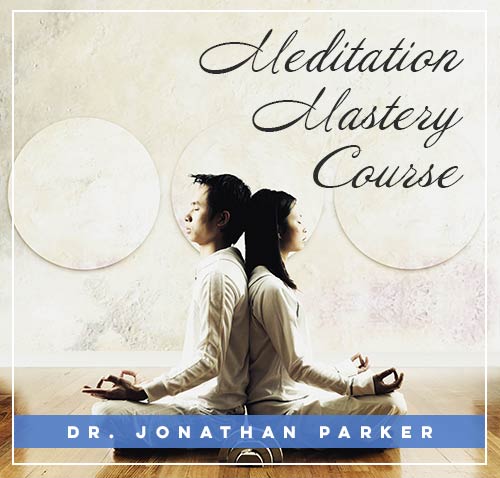Yogic Sleep: Introduction to Deep Relaxation & Renewal

TRANSLATE BUTTON AT THE END OF THE ARTICLE
A Quick Overview
Yogic sleep, also known as Yoga Nidra, is a powerful relaxation technique that allows one to experience deep relaxation while remaining conscious.
This practice combines elements of meditation, deep breathing, and visualization to induce a state of profound tranquility and inner stillness.
Yogic sleep has been used for centuries in yoga and meditation traditions to promote physical, mental, and emotional well-being.
In this article, we will explore the benefits of deep relaxation, how it differs from regular sleep, techniques for achieving deep relaxation, the science behind Yogic sleep, and how to incorporate it into your routine for stress relief, improved sleep quality, mental clarity, and overall wellness.
Understanding Yogic Sleep
Yogic sleep, or Yoga Nidra, is a form of guided meditation that allows the practitioner to access the deep layers of the subconscious mind while maintaining a state of relaxed awareness.
Unlike traditional meditation practices that involve focusing on a single point or object, Yogic sleep involves a systematic relaxation of the body, breath awareness, and visualization techniques.
This helps to release physical tension, mental stress, and emotional blockages, allowing for a profound sense of relaxation and renewal.
Benefits of Deep Relaxation
The benefits of deep relaxation through Yogic sleep are numerous and profound.
Some of the key benefits include:
Reduced stress and anxiety: Yogic sleep helps to calm the nervous system and reduce the production of stress hormones, leading to a sense of peace and tranquility.
Improved sleep quality: Practicing Yogic sleep regularly can help to improve the quality of sleep, leading to a more restful and rejuvenating night’s rest.
Enhanced mental clarity: By clearing the mind of clutter and distractions, Yogic sleep can improve focus, concentration, and overall mental clarity.
Emotional healing: Yogic sleep can help to release emotional blockages and promote emotional healing and balance.
Physical relaxation: Yogic sleep helps to release tension in the muscles and joints, promoting physical relaxation and renewal.
How Yogic Sleep Differs from Regular Sleep
Yogic sleep differs from regular sleep in several key ways.
While both involve a state of relaxation, Yogic sleep is a conscious relaxation practice that allows the practitioner to remain aware and present throughout the experience.
In contrast, regular sleep is a natural physiological process that occurs without conscious effort.
Yogic sleep also involves specific techniques such as deep breathing, body scanning, and visualization, which are not typically part of the sleep process.
Additionally, Yogic sleep is often used as a therapeutic tool to address specific physical, mental, or emotional issues, whereas regular sleep is a natural restorative process that occurs on a nightly basis.
Techniques for Achieving Deep Relaxation
There are several techniques that can help you achieve deep relaxation through Yogic sleep.
Some of the most common techniques include:
Progressive muscle relaxation: In this technique, you systematically tense and relax each muscle group in your body, starting from your toes and working your way up to your head.
Breath awareness: Focusing on the breath can help to calm the mind and promote relaxation.
Try taking slow, deep breaths in and out, focusing on the sensation of the breath as it enters and leaves the body.
Body scanning: This technique involves bringing your awareness to different parts of the body, starting from the feet and moving up to the head.
This can help to release tension and promote relaxation.
Visualization: Using your imagination to visualize a peaceful and calming scene can help to relax the mind and induce a state of deep relaxation.
The Science Behind Yogic Sleep
The science behind Yogic sleep lies in its ability to activate the parasympathetic nervous system, also known as the rest and digest response.
When the body is in a state of deep relaxation, the parasympathetic nervous system is activated, promoting healing, digestion, and rejuvenation.
This state of relaxation also helps to reduce the production of stress hormones such as cortisol, leading to a sense of calm and well-being.
Research has shown that regular practice of Yogic sleep can have a positive impact on both physical and mental health, improving sleep quality, reducing anxiety, and enhancing overall well-being.
Steps to Practice Yogic Sleep
To practice Yogic sleep, follow these steps:
Find a quiet and comfortable place to lie down.
Close your eyes and take a few deep breaths to relax the body and mind.
Begin by focusing on your breath, allowing it to become slow and steady.
Engage in progressive muscle relaxation, tensing and releasing each muscle group in the body.
Practice body scanning, bringing your awareness to different parts of the body.
Visualize a peaceful scene or mantra to help relax the mind.
Stay in this state of deep relaxation for 20-30 minutes, allowing yourself to fully let go and surrender to the experience.
Slowly bring yourself back to a state of wakefulness, taking deep breaths and gently moving your body.
Common Misconceptions About Yogic Sleep
There are some common misconceptions about Yogic sleep that are important to address.
Some of these include:
Yogic sleep is the same as regular sleep: While both involve relaxation, Yogic sleep is a conscious practice that involves specific techniques to promote deep relaxation and renewal.
Yogic sleep is only for advanced practitioners: Anyone can practice Yogic sleep, regardless of experience level.
It is a gentle and accessible practice that can be beneficial for everyone.
Yogic sleep is a form of hypnosis: While Yogic sleep involves guided imagery and visualization, it is not the same as hypnosis.
It is a form of meditation that promotes deep relaxation and inner stillness.
Incorporating Yogic Sleep into Your Routine
To incorporate Yogic sleep into your routine, set aside time each day to practice this powerful relaxation technique.
You can practice Yogic sleep in the morning to start your day with a sense of calm and clarity, or in the evening to unwind and relax before bed.
Find a quiet and comfortable space where you won’t be disturbed, and commit to making Yogic sleep a regular part of your self-care routine.
Over time, you may notice improvements in your sleep quality, stress levels, and overall well-being.
Yogic Sleep for Stress Relief
Yogic sleep is a highly effective tool for stress relief, as it helps to calm the nervous system, reduce the production of stress hormones, and promote relaxation.
By practicing Yogic sleep regularly, you can cultivate a sense of inner peace and tranquility that can help you navigate life’s challenges with greater ease and resilience.
Whether you are dealing with work-related stress, relationship issues, or other sources of tension, Yogic sleep can provide a safe and nurturing space for you to release stress and find renewal.
Improving Sleep Quality with Yogic Sleep
If you struggle with sleep disturbances or insomnia, incorporating Yogic sleep into your routine can help improve your sleep quality.
By promoting relaxation, reducing stress, and calming the mind, Yogic sleep can help you fall asleep more easily and stay asleep throughout the night.
Practicing Yogic sleep before bed can create a bedtime routine that signals to your body and mind that it is time to unwind and prepare for rest.
Over time, you may find that you experience deeper and more restful sleep, waking up feeling refreshed and rejuvenated.
Yogic Sleep for Mental Clarity
In today’s fast-paced world, it can be challenging to find moments of stillness and clarity amidst the constant busyness and distractions.
Yogic sleep offers a powerful tool for cultivating mental clarity and focus, as it helps to quiet the mind, release mental chatter, and promote inner awareness.
By practicing Yogic sleep regularly, you can train your mind to let go of stress, worries, and distractions, allowing you to think more clearly, make better decisions, and approach challenges with a sense of calm and centeredness.
Guided Yogic Sleep Meditations
If you are new to Yogic sleep or looking for guided practices to enhance your experience, there are many resources available online that offer guided Yogic sleep meditations.
These meditations typically involve a teacher or guide leading you through a series of relaxation techniques, visualizations, and affirmations to promote deep relaxation and inner stillness.
You can find guided Yogic sleep meditations on meditation apps, YouTube channels, and meditation websites.
Experiment with different guided practices to find one that resonates with you and supports your journey towards deep relaxation and renewal.
Conclusion
Yogic sleep, or Yoga Nidra, is a powerful relaxation technique that offers numerous benefits for physical, mental, and emotional well-being.
By practicing Yogic sleep regularly, you can reduce stress, improve sleep quality, enhance mental clarity, and promote overall wellness.
Incorporate Yogic sleep into your daily routine to experience deep relaxation and renewal, and explore guided Yogic sleep meditations to deepen your practice.
Whether you are new to Yogic sleep or an experienced practitioner, this ancient practice can help you find peace, balance, and inner stillness in a busy and hectic world.
Embrace the transformative power of Yogic sleep and awaken to a new level of relaxation and rejuvenation.

The Enlightenment Journey is a remarkable collection of writings authored by a distinguished group of experts in the fields of spirituality, new age, and esoteric knowledge.
This anthology features a diverse assembly of well-experienced authors who bring their profound insights and credible perspectives to the forefront.
Each contributor possesses a wealth of knowledge and wisdom, making them authorities in their respective domains.
Together, they offer readers a transformative journey into the realms of spiritual growth, self-discovery, and esoteric enlightenment.
The Enlightenment Journey is a testament to the collective expertise of these luminaries, providing readers with a rich tapestry of ideas and information to illuminate their spiritual path.
Our Diverse Expertise 🌟
While our primary focus is on spirituality and esotericism, we are equally passionate about exploring a wide range of other topics and niches 🌍📚. Our experienced team is dedicated to delivering high-quality, informative content across various subjects ✨.
To ensure we provide the most accurate and valuable insights, we collaborate with trusted experts in their respective domains 🧑🏫👩🏫. This allows us to offer well-rounded perspectives and knowledge to our readers.
Our blog originally focused on spirituality and metaphysics, but we’ve since expanded to cover a wide range of niches. Don’t worry—we continue to publish a lot of articles on spirituality! Frequently visit our blog to explore our diverse content and stay tuned for more insightful reads.




















